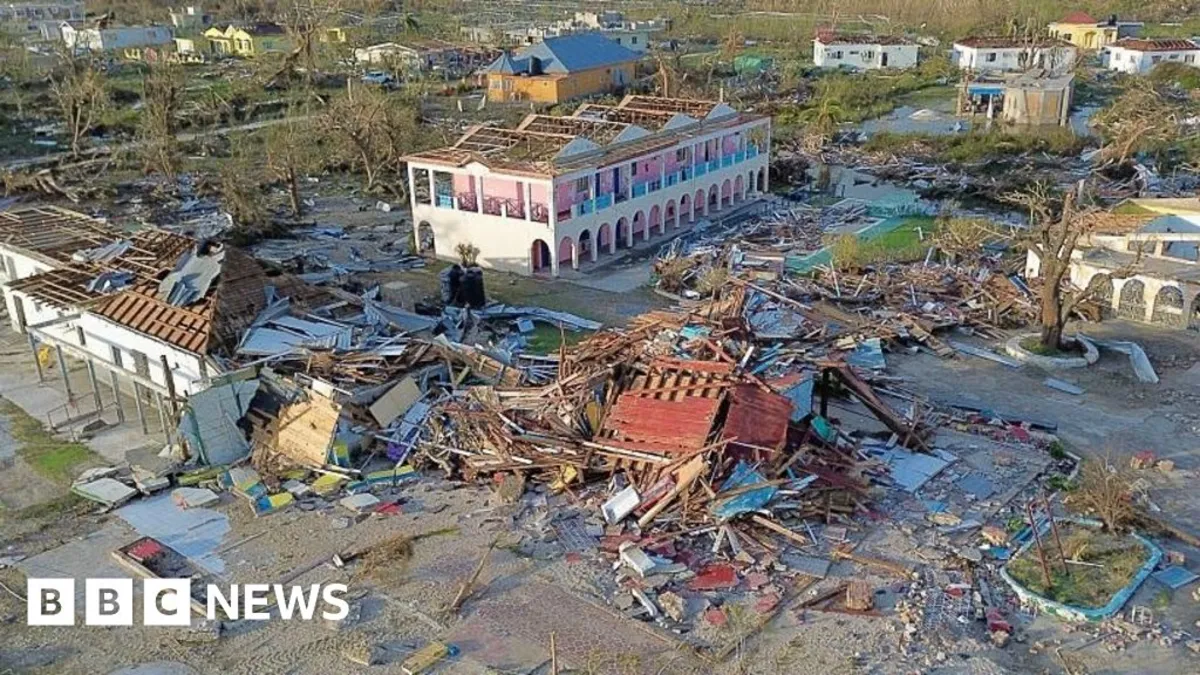
The scale of devastation left by Hurricane Melissa is becoming increasingly apparent as the record-setting storm swept through Jamaica, Haiti, and Cuba, resulting in a tragic loss of at least 32 lives. Although it was downgraded from a Category 5 to a Category 1 hurricane, Melissa intensified as it moved through the Bahamas on Thursday, with expectations of making landfall in Bermuda shortly thereafter.
Hurricane Melissa is noted as the strongest storm to strike the Caribbean in modern history, achieving peak winds of 298 km/h (185 mph)—a force greater than that of Hurricane Katrina, which devastated New Orleans in 2005, resulting in 1,392 fatalities. According to the US National Hurricane Centre (NHC), sustained winds measured at 165 km/h at 09:00 GMT on Thursday, with warnings issued about potential coastal flooding as the storm accelerated northeastward.
In response to the threat posed by Hurricane Melissa, authorities in the Bahamas lifted hurricane warnings for the central and southern islands, as well as for the Turks and Caicos. Leon Lundy, the country's Minister of State for Disaster Risk Management, urged residents to remain vigilant, emphasizing that even a weakened hurricane can still cause significant destruction. Nearly 1,500 individuals were evacuated from vulnerable areas, marking one of the largest evacuation operations in Bahamian history.
The powerful winds from Hurricane Melissa have wreaked havoc across the wider Caribbean, damaging homes and buildings, uprooting trees, and leaving tens of thousands without power. In Cuba, residents of Santiago de Cuba, the country's second-largest city, are using machetes to clear streets cluttered with debris. President Miguel Díaz-Canel acknowledged the considerable damage caused by the hurricane but did not disclose specific casualty figures.
In Jamaica, the southwestern parish of St Elizabeth faced the brunt of the storm's impact, with knee-deep mud and washed-out bridges isolating towns such as Black River. Observers reported minimal damage on the road west out of the capital, Kingston, but as they ventured deeper into central Jamaica, the devastation became evident. The town of Mandeville appeared to be significantly impacted, with a petrol station losing its roof and most of its pumps.
According to Dana Malcolm of the Jamaica Observer, progress along roads still blocked by landslides has been painfully slow. She recounted, “I was standing in what used to be main street yesterday and I was knee-deep in mud where the road should have been.” Communication networks across Jamaica have been severely disrupted, with power lines down in much of the southwest, leaving many families unable to contact loved ones in the hardest-hit areas.
In Black River, reports from the New York Times detailed a family member of a victim who walked 15 miles (24 km) to the police station to report their loved one's death. Amidst the chaos, Desmond McKenzie, the minister of local government, shared a glimmer of hope with the news of a baby being safely delivered under emergency conditions, dubbing the infant “Baby Melissa.”
Haiti, already struggling with gang violence and a humanitarian crisis, faced at least 23 fatalities—10 of whom were children—largely due to severe flooding after days of unyielding rain. Despite avoiding a direct hit, the storm's effects were devastating. In addition to the casualties in Haiti, officials reported at least eight deaths in Jamaica and one in the Dominican Republic.
The NHC has indicated that floodwaters across the Bahamas are expected to recede by Thursday; however, hazardous conditions are anticipated to persist in Cuba, Jamaica, and Hispaniola for several days. As the Caribbean begins to assess the full extent of the damage caused by Hurricane Melissa, communities will need to come together to rebuild and recover from this catastrophic event.